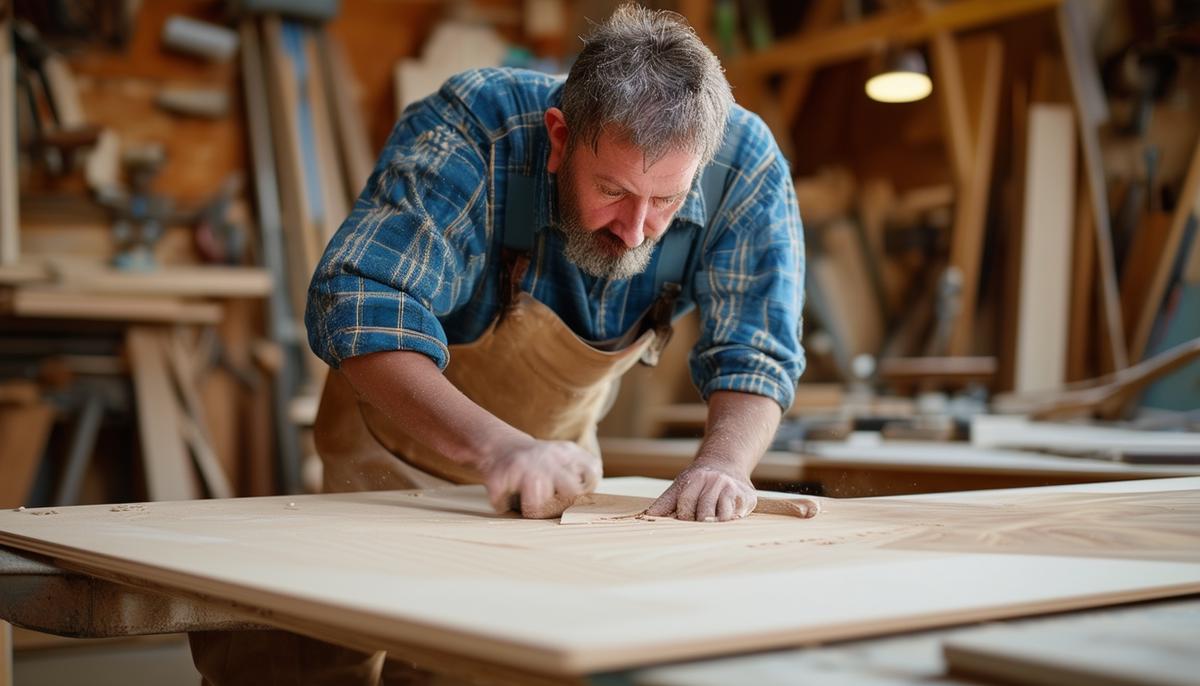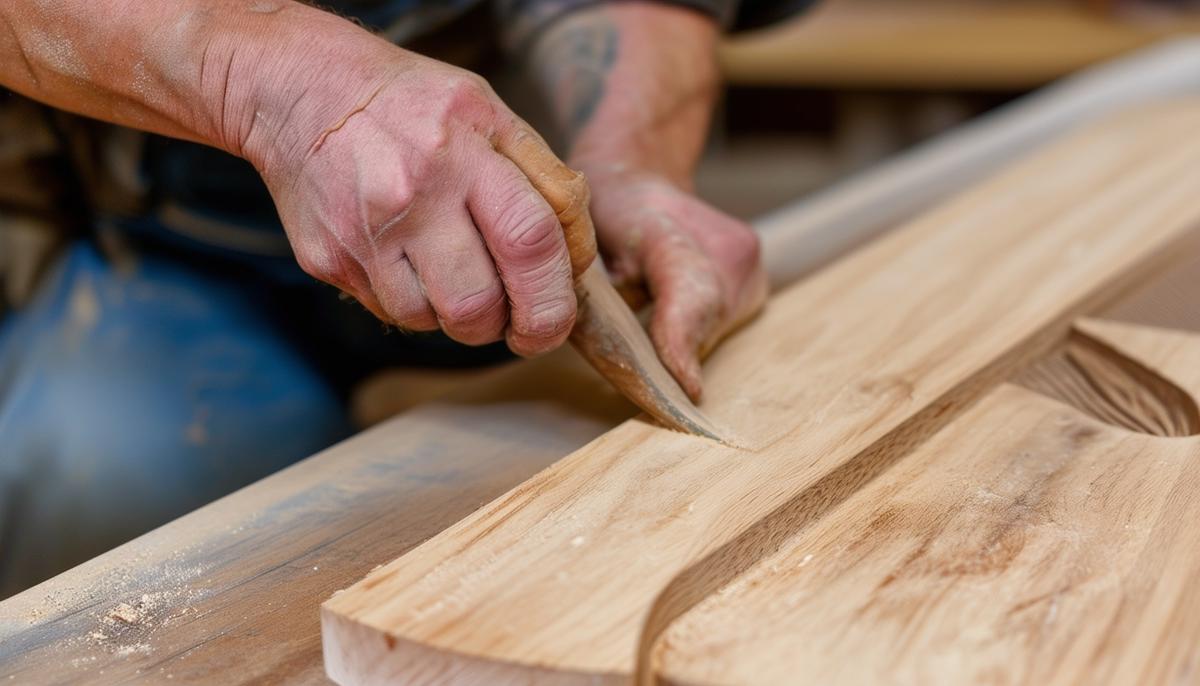Choosing the Right Router
Picking the correct router is crucial for creating wooden signs. Here's a breakdown of different router types and their uses:
Trim Routers
Trim routers are lightweight and designed for detail work. They're ideal for intricate sign carving that doesn't require removing large amounts of material. The Ridgid trim router is popular for close-up work.
Plunge Routers
Plunge routers allow you to start a cut in the middle of your material. They're essential for detailed designs and intricate lettering. The plunge action lets you control the cut depth on the fly. The Metabo HTP 36V is a good cordless option, adding mobility to your precision.
Fixed-Base Routers
Fixed-base routers are ideal for repetitive tasks where depth is constant. They provide stability for long, straight cuts or around the perimeter of your sign. The Bosch 1617EVSPK offers both fixed-base and plunge options.
Why the DeWalt 611PK?
The DeWalt 611PK is versatile and user-friendly. With both fixed and plunge bases, it suits various sign-making needs. It's compact enough for detailed work, yet powerful enough for heavier tasks. Features include soft-start, LED lights, and variable speed control.
Dust Collection
A good dust collection system improves visibility while working. The Milwaukee M18 Fuel Compact Router is cordless, offering flexibility, though its dust collection could be improved.
Comparison Table
| Router | Type | Special Features |
|---|---|---|
| Ridgid Trim Router | Trim | Lightweight, great for detailed work |
| Metabo HTP 36V | Plunge | Cordless, variable depth control |
| Bosch 1617EVSPK | Fixed/Plunge | Dual functionality, powerful motor |
| DeWalt 611PK | Fixed/Plunge | Versatile, soft-start, LED lights |
| Milwaukee M18 Fuel Compact Router | Trim | Cordless, high RPM, needs better dust collection |
Choose a router that fits your specific project needs for better results and efficiency.

Setting Up Your Workspace
A proper workspace setup ensures efficient and safe sign-making. Here are key elements to consider:
- Stable work surface: Use a sturdy workbench or sawhorses with a thick piece of MDF or plywood.
- Clamps: Essential for holding your workpiece securely. Use strong, easy-to-adjust clamps like quick-action or bar clamps.
- Lighting: Good overhead lighting and an adjustable lamp help you see details clearly.
- Organization: Keep frequently used tools, bits, and accessories within reach. Use pegboards, tool drawers, or magnetic strips.
- Safety equipment:
- Safety glasses to protect your eyes
- Dust collection system (e.g., shop vac with HEPA filter)
- Ear protection (ear muffs or plugs)
- Proper clothing (no loose items or jewelry)
- Power management: Place outlets and cords carefully to avoid tripping hazards. For cordless routers, keep spare batteries charged.
A well-prepared workspace allows you to focus on craftsmanship and enjoy the sign-making process. Studies have shown that a properly organized workspace can increase productivity by up to 30%.1

Preparing Wood and Creating Stencils
Wood Preparation:
- Inspect reclaimed wood for nails, screws, or foreign objects.
- Remove obstacles and fill holes or cracks with wood filler if needed.
- Clean the wood with a stiff-bristled brush and soapy water, then let it dry completely.
- Sand the wood, starting with coarse-grit (80) and moving to finer grits (150-220).
- Clean off sanding dust with a tack cloth.
Wood Types:
- Pine: Soft, easy to work with, beautiful grain
- Cedar: Good for outdoor signs, weather-resistant
- Hardwoods (oak, maple): Durable but tougher to carve
Creating Stencils:
- Use a vinyl cutting machine like Silhouette Cameo for precise, custom stencils.
- For hand-cutting, print designs on paper and cut with a craft knife.
- Use blue painter's tape to mask off areas for protection.
- Position the stencil on the wood and press down firmly.
- Apply paint using spray paint or a small foam roller in thin, even coats.
- Let paint dry fully before carefully removing the stencil.
- Clean up any imperfections with a fine brush.
Taking time to properly prepare your materials will lead to a better final product. Research indicates that proper wood preparation can extend the lifespan of a wooden sign by up to 5 years.2

Freehand Routing Techniques
Practice on scrap wood to familiarize yourself with the router's feel and behavior. Start with simple shapes to build confidence.
Set the bit depth carefully. A good starting point is around 1/8 inch. You can make multiple passes to go deeper if needed. Adjust based on your design's intricacy and the wood's hardness. Ridgid trim routers work well for shallow, detailed work, while the Milwaukee M18 Fuel can handle deeper cuts efficiently.
Tips for Consistent Routing:
- Maintain a steady hand and move at a uniform pace
- Use both hands for better control—one guiding the router and the other applying pressure
- If your router has a soft-start feature, use it to ease into the cut
Don't stress about minor mistakes. Try integrating them into your design or use wood filler for shallow gouges. Gentle sanding can smooth out small imperfections.
Working freehand allows for creative flexibility. Consider adding borders around your text or designs to mask uneven lines and give your sign a completed look.
If using a Milwaukee M18 Fuel router, take advantage of its high RPM for smoother cuts. However, maintain control to prevent drifting.
Mastering freehand routing takes practice and patience. Start slow, understand your tools, and embrace mishaps as part of the learning process.

Post-Routing Finishing Touches
- Begin with a final sanding using 220-grit sandpaper to smooth out any rough edges.
- Clean off all dust with a tack cloth or slightly damp rag.
- For painting:
- Try dry brushing for a rustic look
- Use a foam roller and fine brush for a solid finish
- Apply multiple thin coats rather than one thick coat
- Add color to routed letters or designs using small detail brushes or paint pens for precision.
For outdoor signs, apply a suitable outdoor wood sealant like polyurethane or spar urethane. Use a high-quality brush and apply thin, even coats, sanding lightly between coats once dry.1
To create a vintage look, lightly sand specific areas to reveal some wood texture or undercoat after the paint dries.
Make designs pop by highlighting letter edges with a contrasting color or metallic paint.
Final Steps:
- Clean your workspace and tools after finishing
- Inspect your sign for areas needing touch-ups
- Let everything dry thoroughly before considering your project complete

Remember, the right router can make all the difference in your sign-making projects. Choose wisely, set up your workspace efficiently, and pay attention to those finishing touches. Your craftsmanship will shine through every detail.
